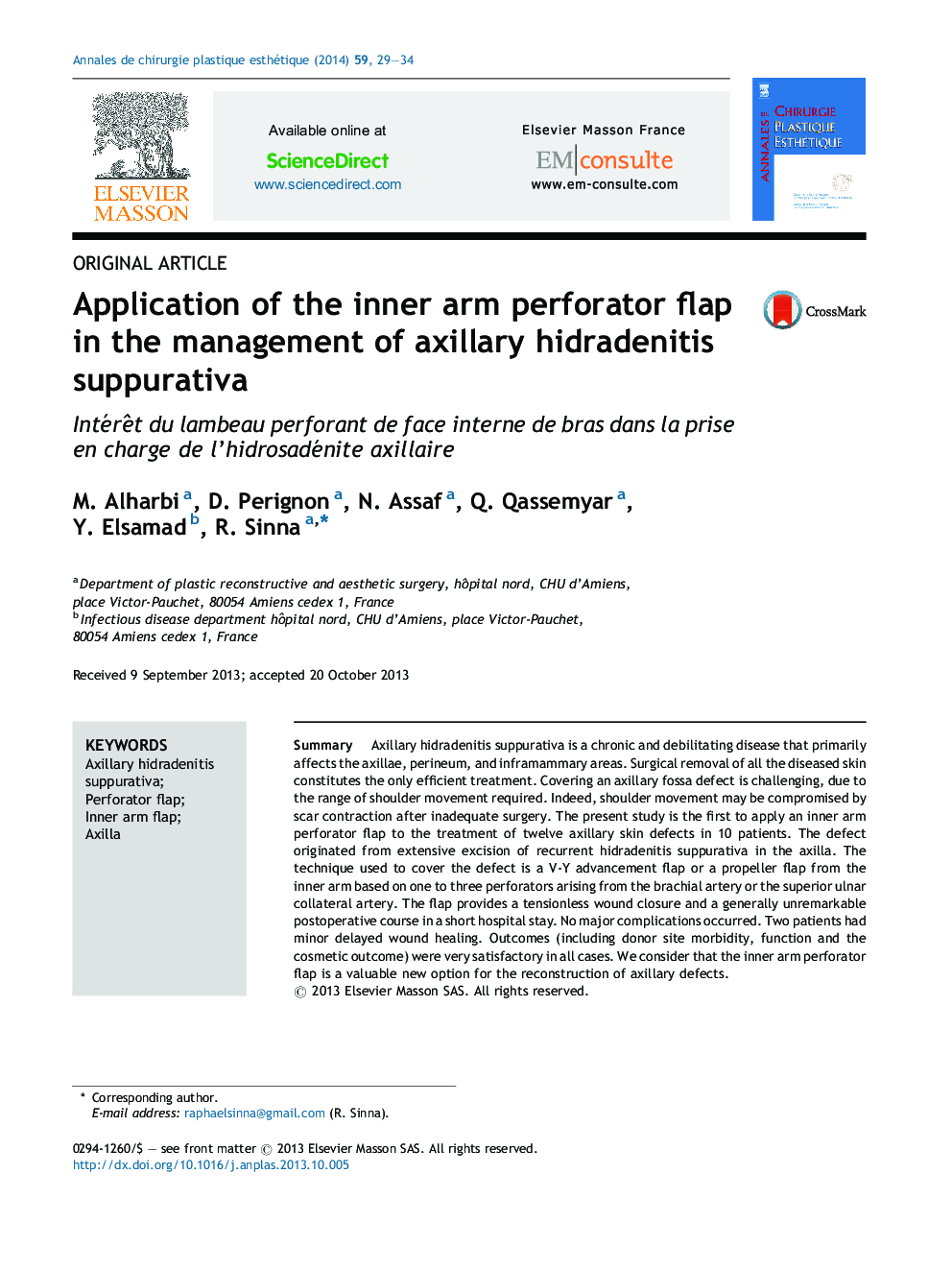| Article ID | Journal | Published Year | Pages | File Type |
|---|---|---|---|---|
| 3184655 | Annales de Chirurgie Plastique Esthétique | 2014 | 6 Pages |
SummaryAxillary hidradenitis suppurativa is a chronic and debilitating disease that primarily affects the axillae, perineum, and inframammary areas. Surgical removal of all the diseased skin constitutes the only efficient treatment. Covering an axillary fossa defect is challenging, due to the range of shoulder movement required. Indeed, shoulder movement may be compromised by scar contraction after inadequate surgery. The present study is the first to apply an inner arm perforator flap to the treatment of twelve axillary skin defects in 10 patients. The defect originated from extensive excision of recurrent hidradenitis suppurativa in the axilla. The technique used to cover the defect is a V-Y advancement flap or a propeller flap from the inner arm based on one to three perforators arising from the brachial artery or the superior ulnar collateral artery. The flap provides a tensionless wound closure and a generally unremarkable postoperative course in a short hospital stay. No major complications occurred. Two patients had minor delayed wound healing. Outcomes (including donor site morbidity, function and the cosmetic outcome) were very satisfactory in all cases. We consider that the inner arm perforator flap is a valuable new option for the reconstruction of axillary defects.
RésuméL’hidrosadénite est une pathologie qui peut se révéler très handicapante. Elle peut toucher les régions axillaires, périnéales et sous-mammaires. L’ablation chirurgicale des zones atteintes reste le seul traitement radical. Cependant, la couverture de la perte de substance engendrée, en particulier en région axillaire, reste difficile à cause de l’impact fonctionnel et esthétique. Ce travail présente l’utilisation de 12 lambeaux perforants de face médiale de bras chez 10 patients. Dans cette indication, le lambeau perforant peut être disséqué soit en hélice, soit en avancement V-Y, vascularisé par 1 à 3 perforantes de l’artère brachiale ou de l’artère collatérale ulnaire supérieure. Ce lambeau permet une fermeture directe sans tension de première intention permettant une hospitalisation et une cicatrisation de courte durée. Par ailleurs aucune complication notable n’a été observée. Pour nous, ce lambeau a une place de choix dans la prise en charge des reconstructions du creux axillaire.
